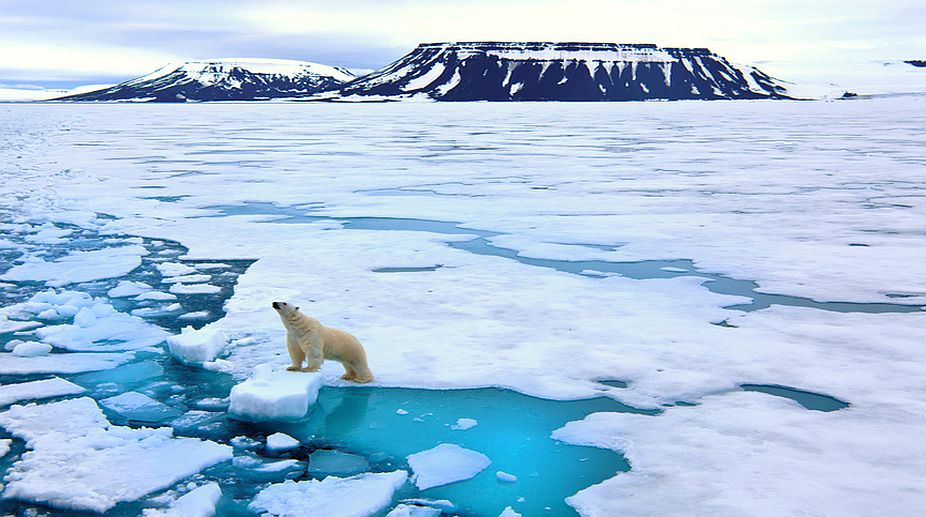These days, I find myself hooked on a TV show called The Hundred, which contemplates a distant future where most of mankind has been wiped out by nuclear war. But then, the postapocalypse genre is after all among the most fascinating. Humanity loves to contemplate its own destruction, particularly whilst ensconced in the comforts of modernity.
The nuclear disaster scenario is only one of many such threads in the post-apocalypse genre. One of them is medical disaster. Many of us were left scarred by I am Legend, for example, where a virus has wiped out most of humanity while turning those left into mutated nocturnal vampire-zombies.
While shivering deliciously at the predicament of the last man in New York, many of us would have found ourselves thinking, “Could it actually happen?”
Nuclear disaster is certainly a clear and present danger, but the stuff about a medical crisis … there’s no chance that something will start turning people into flesh-eating zombies, right? Maybe. But as for a virus of some sort, a mutated bacteria or bug, confidence proves difficult to summon up. There are several examples where pandemics have produced a natural, wide-scale cull of humanity.
The Black Death killed anywhere between 75 to 200 million people in Eurasia. Other diseases that have caused death on a large scale include smallpox, cholera and tuberculosis.
Now, however, medical science appears to have everything well sorted. Several diseases have been wiped out, such as smallpox — deemed responsible for the somewhere between 300 and 500 million deaths during the 20th century — which was declared eradicated in 2011.
The risk of exposure to others has been hugely shrunk on the global level, such as polio. And modern treatments and vaccinations mean that in general terms, the world currently has perhaps the healthiest population than ever before, all seven billion-plus of it.
But planet Earth has a way of evening the score with humanity whose activities have such profoundly adverse consequences. In recent years, researchers have started to worry about the possibility of ancient viruses and bacteria springing back to life as climate change melts permafrost soils. As cited in a recent article on BBC Earth, the evidence is mounting.
Last August, in a remote corner of the Siberian tundra in the Arctic Circle, a 12-year-old boy died and about 20 people were hospitalised because of anthrax. Research suggests that some 75 years ago, a reindeer infected with anthrax died and its carcass became trapped in the permafrost.
Eventually a heatwave came in the summer of 2016 that thawed the permafrost and exposed the reindeer corpse, releasing anthrax into water and soil. Scientists have discovered intact the Spanish flu virus dating back to 1918 in corpses buried in mass graves in Alaska’s tundra. Smallpox and bubonic plague are highly likely to be buried in Siberia.
Without climate change, superficial permafrost layers about 50cm deep melt every summer. But now, in the Arctic Circle, temperatures are rising about three times faster than in the rest of the world.
Global warming is gradually exposing older layers of permafrost, raising the frightening possibility of diseases from hundreds and even thousands of years ago being resurrected — diseases that haven’t been seen for so long that mankind would have no natural immunity to them, nor the benefits of research. Permafrost is an excellent preserver of microbes and viruses, because it is cold and dark and there is no oxygen. Bacteria, meanwhile, can remain alive for up to a million years.
Then there are two other chilling realities.
First, there is the growing antivaccination movement in some parts of the world, leading to pockets of epidemics of diseases such as chicken pox that are entirely preventable. The reluctance of people to have their children vaccinated is based mostly on misinformation, plus the benefits of herd immunity — in a population free of polio, for example, the chance of encountering the virus is very slim.
But the high rate of modern travel and transport means that viruses and microbes are exchanged across the continents, and herd immunities are being compromised, to the extent that the Obama administration was considering formulating legislation forcing parents to have their children vaccinated.
Secondly, the “super bug” now seems a reality, and in 2015, the World Health Organization warned that antibiotic resistance had globally reached such levels that we are looking at “the end of modern medicine as we know it” — humanity is hurtling towards a “post-antibiotic era in which common infections will once again kill”. The situation has not improved significantly over the last year and a half.
If such nightmares do come to pass, the very slim silver lining for the cynical is this — humanity will have its own blood on its hands, since it is human irresponsibility that is causing both climate change that is melting the permafrost, and growth of the “super bug”.
DAWN/ANN











